|
|
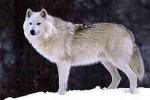
|
The Bernard's Wolf
|
HABITAT
The Bernard's Wolves reside on Banks Island in the Northwest Territories of Canada. They were previously widespread in the archipelago Victoria, but were annihilated by excessive hunting. |
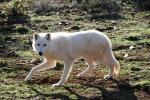
|
The Alaskan Tundra Wolf
|
HABITAT
The Alaskan tundra wolf resides in the tundra regions along the Arctic coast of northern Alaska. |

|
The Arabian Wolf
|
|
Standing approximately 26 inches shoulder height and weighing an average of 40 pounds, the Arabian Wolf is the smallest wolf subspecies, yet, the largest canid in Arabia. They have short greyish-beige hair which becomes much longer and thicker in winter. |

|
The Arctic Wolf
|
|
Able to tolerate years of sub-zero temperatures, up to five months of darkness a year, and weeks without food, the arctic wolf lives in one of the few places on earth where it is safe from the greatest threat of all - man. |
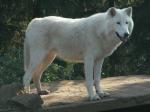
|
The Baffin Island Wolf
|
HABITAT
Baffin Island wolves are found exclusively on Baffin Island and a few small adjacent islands. |
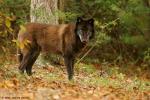
|
The British Columbian Wolf
|
HABITAT
It was once found in the greater part of British Columbia, parts of Yukon, Alberta, and southwestern Alaska It crossed territories with the Alexander Archipelago Wolf and the Cascade Mountain Wolf. |

|
The Cascade Mountain Wolf
|
HABITAT
At one time, it could be found along the Cascades, from Southwestern Canada down to Northern California. |
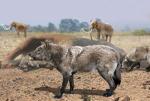
|
The Dire Wolf (Canis dirus)
|
|
The dire wolf became extinct somewhere between 4,000 and 16,000 years ago. This is thought to be partially because of its inability to compete with the faster, more intelligent gray wolf. It is the largest canid known to ever exist. And though it was similar in many ways to the gray wolf, the dire wolf was heavier built, more robust, with shorter and more powerful legs, and a larger head. |

|
The Eastern Timber Wolf
|
HABITAT
The eastern timber wolf was at one time found as far south as Florida and as far west as Minnesota. It still occupies over 40% of its original range in Canada. However, it is found mainly around the Great Lakes and St. Lawrence regions of southeast Ontario and southwest Quebec in remote, forested areas. Their greatest concentration is in Algonquin Park in Ontario. |
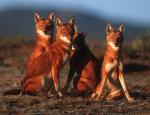
|
The Ethiopian Wolf
|
|
The Ethiopian wolf, also known as the Abyssinian Wolf or Simien Jackal, is believed by some scientists not to be a true wolf. However, DNA studies show it to be more closely related to gray wolves and coyotes than to any other African canines. |
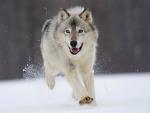
|
The European Gray Wolf
|
HABITAT
It is present in Eastern and Central Europe and Central Asia. It still covers the greatest range among all gray wolf subspecies. The size of their territories depends on the abundance of food and water. They are very adaptable to different environments. |

|
The Florida Red Wolf
|
HABITAT
The Florida Red Wolf is known to have inhabited areas of Maine and Ohio down to Florida and Alabama. |
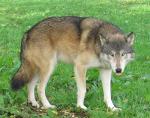
|
The Great Plains Wolf
|
HABITAT
The Great Plains wolf at one time had the largest range of any subspecies in North America, inhabiting most of the Western United States, southeastern Alaska, and central and northeastern Canada. However, by the 1930s, the subspecies had been almost totally eradicated from the United States. |

|
The Greenland Wolf
|
|
The Greenland wolf has been described as a white to pale colored wolf very similar to the Arctic wolf and resides in Greenland. It was classified as a distinct subspecies in 1935 by British zoologist Reginald Innes Pocock. |
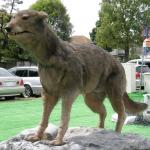
|
The Hokkaido Wolf
|
HABITAT
They once inhabited the Japanese island of Hokkaido, Russia's island of Sakhalin and Kamchatka Peninsula, and the Kuril islands. |
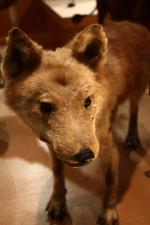
|
The Honshu Wolf
|
HABITAT
It lived on the Japanese islands of Honshu, Shikoku, and Kyushu primarily in remote mountain areas. |
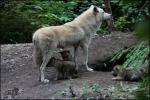
|
The Hudson Bay Wolf
|
HABITAT
They are found in Canada, west of Hudson Bay from Northern Manitoba through the Northwest Territories and above, sometimes migrating south in the winter with the caribou herds. |

|
The Iberian Wolf
|
HABITAT
The Iberian wolf inhabits the forests and plains of the northwestern part of Spain, the northeastern top of Portugal, and a few isolated areas in the Sierra Morena, Spain. Over 50 percent of the Iberian wolves reside in Northern Castilla y Len. |
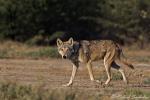
|
The Indian Wolf
|
HABITAT
The Indian Wolf is adapted to scrublands, grasslands, and semi-arid pastoral environments. It is found mainly in the Indian states of Gujarat, Rajasthan, Haryana, Uttar Pradesh, Madhya Pradesh, Maharashtra, Karnataka and Andhra Pradesh. Its territories range from 100 to 150 square miles. Much of the Indian Wolf's habitat overlaps that of the Himalayan Wolf, and because of this, it is a wonder why the two do not interbreed. |
|
|